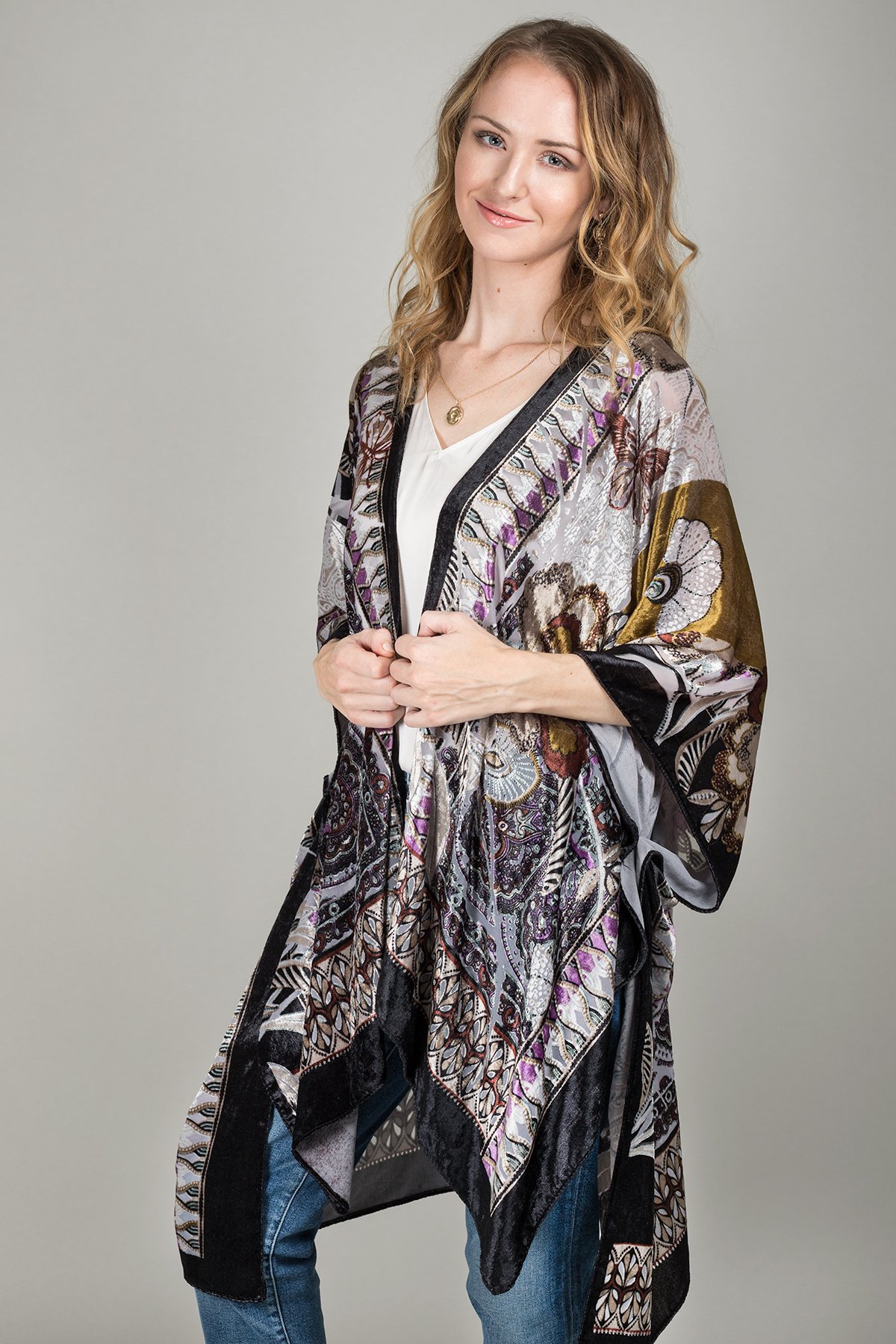All About the Japanese Kimonos

The Japanese kimonos, which in a real sense means “something worn,” is one of the world’s most conspicuous conventional pieces of clothing. There are many kinds of kimono worn relying upon the event. Just as different examples and tones to coordinate with the various seasons.
Kimono parts and frill
There are a few components included when wearing a kimonos and knowing the pieces. Coming up next are a portion of the primary parts engaged with wearing a kimono:
・Kimono –
The premise of the kimono is, obviously, the kimonos robe itself. It very well may be produced using an assortment of materials including cotton, cloth, fleece, and silk.
・Obi –
the furthest scarf that is tied around a kimonos. The bunch can be tied in an assortment of embellishing ways. Regularly, the example of Obi is pretty much as significant as the kimono design.
・Koshi-himo –
This resembles a scarf for the midsection; it is tied at the abdomen to get the kimono set up prior to tying the more muddled obi. These silk, fleece or delicate cotton ropes are not really seen since they are under the obi.
・Nagajuban –
Fundamentally the undershirt, or slip, of the kimono dress. Formed like a kimono, these articles of clothing secure the beautiful (and regularly costly) kimono which are hard to clean. Along these lines, it’s important to wear an underwear. To shield the kimono from sweat and afterward washing. It is important to keep the kimono clean.
・Datejime –
A belt that is attached over the kimono, yet under the obi, which helps the obi keep its shape.
・Tabi –
Socks made explicitly to be worn with conventional Japanese footwear. The toe region is parted into two areas.
・Geta/zori –
These are a portion of the customary kinds of footwear worn with kimono. They fairly look like present day shoes. Zori are produced using rice straw. Lacquered wood and are worn with a kimono on conventional events. Geta are raised wooden obstructs and are worn with the casual yukata.
Various kinds of kimono
As referenced previously, there are a few kinds of kimono that could be worn at various events. From an extremely formal kimono to a wedding kimon. Wearing the legitimate style and shading in Japanese society.
Yukata and Komon Kimono
Quite possibly the main thing to know for tourists is to recognize the kimono from the yukata.
First is the material – kimonos are typically made of silk or brocade. Have an inward and external layer, and are worn with no less than two collars. They can be worn lasting through the year. And have distinctive occasional styles – unlined in summer. Lined in harvest time and spring, and cushioned in winter.
Yukata rather is the more easygoing and modest article of clothing that is regularly made of cotton. Implied for wearing in the late spring. Since yukata are less formal, individuals regularly try different things with tones, examples, and adornments.
Komon is otherwise called an easygoing kimono with a rehashing design. That frequently consolidates vertical stripes. It is appropriate for a walk around the town. The most well-known kimono that you can lease and pick among an assortment of bright plans.
Furisode
A furisode is a kind of kimono for the most part worn by youthful and unmarried ladies. It is frequently worn at transitioning functions (festivities of youngsters turning 20 years of age). The special place of a furisode is the length of the sleeves.. It’s rarely utilized for strolling in and out of town.
Houmongi and Tomesode
The strict importance of houmongi is “visiting wear” and it is a proper kimono with an example, that streams over the shoulder to the creases toward the back and is apparent on the sleeves and under the abdomen. This is a famous decision to wear for services and kabuki shows.
Tomesode is the most conventional kimono and the example is consistently beneath the midriff and has a delightful plan which now and then incorporates gold. It has either 3 or 5 peaks, the last being more formal, and there are shading or plain dark assortments. Tomesode is for the most part worn by wedded people for significant services.
Hakama
Hakama is a gasp like article of clothing worn over a kimono. Fastened by a progression of strings that are wrapped with regards to the body and afterward tied at the back. Other than tabi, this can be likewise worn with boots.
Hakama were chiefly worn by men in the past as they made it workable for individuals to ride ponies. Run effectively, however they were not only worn by men.




